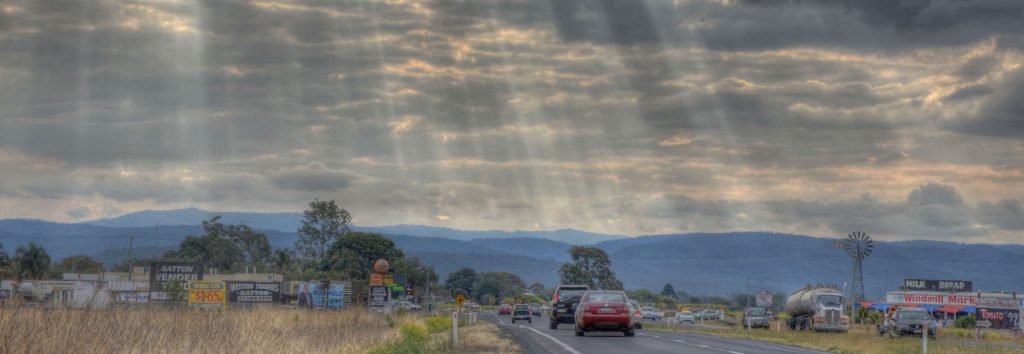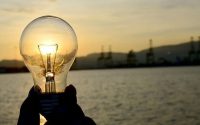SAD Lights and Depression

Can They Really Help?
Non-SAD Depression
If you have a depression that doesn’t seem related to the seasons you may assume that light therapy wouldn’t be for you but that isn’t the case. SAD Lights and depression are very closely linked with numerous studies indicating that SAD lights also work for depression unrelated to the seasons.
Studies to prove it
Back in 2011 a chap called Risaert Lieverse, a psychiatrist and researcher in the School of Mental Health and Neuroscience at Maastricht University in the Netherlands, carried out a study of bright light in 89 older people with depression.
These older people (aged 60 or above) underwent a light therapy programme every morning where they took in 7,500 lux of light for an hour early in the morning.
They found that bright light was not just superior to the control treatment as an antidepressant, but also reduced levels of the stress hormone cortisol in both urine and saliva. Elevated levels of cortisol in blood, saliva and urine are common in people with nonseasonal depression, where they have been interpreted as evidence of increased stress.
So basically the fact that light therapy reduces cortisol in depressed people further backs up its beneficial effects for people in this group.
SAD Lights and Depression
Better than Prozac?
A recent study proved light therapy to be better than antidepressants such as Prozac for major depression.
The study in January 2016 was conducted by Raymond Lam and his colleagues across Canada – it was one of the biggest and most sophisticated studies of light therapy so far.
122 patients took part in the study and everyone received a pill (fluoxetine – known more widely by its’ trade name Prozac) and everyone a light therapy treatment device. Amongst the group some received a placebo pill and some a placebo treatment device. The study lasted eight weeks.
The study showed that 40% of patients just using light therapy (with a placebo pill) were in remission and 60% of those using the combination of the light therapy and Prozac were in remission. In comparison ‘only‘ 30% of those using Prozac and the placebo treatment device were in remission.

Light therapy to treat severe depression
The versatility of light therapy as a form of treatment for depression is shown further by its use as one of the three elements of something called triple chronotherapy, which is used to treat people with non-seasonal depression.
The other two elements of this unusual treatment are sleep deprivation and asking people to go to sleep and wake up earlier than normal. When these two elements are combined with light therapy researchers have found a highly potent and lasting antidepressant effect.
It is so powerful that in Milan, where much of this research took place (it was carried out by Francesco Benedetti, head of research at the Division of Neuroscience at San Raffaele) triple chronotherapy is used as an alternative to shock therapy in treating the most severely depressed patients.
SAD Depression
And do SAD Lights help people with Seasonal Affective Disorder? Put simply most people (around 80%) who suffer from Seasonal Affective Disorder benefit from light therapy.
The first studies into light therapy
An enormous amount of research has been conducted into light therapy over the past few decades.
Dr Norman Rosenthal is a world renown psychiatrist and scientist and it was he who was at the helm of the first controlled studies of the effects of light therapy on people with SAD in the early 1980s.
He put an article in the Washington Post essentially asking for people suffering from seasonal depression to take part in a research programme. To his surprise rather than getting a handful of applicants they got hundreds! The first study into light therapy was about to begin.
The study began in October and November 1981. Using a full spectrum light participants received three hours of light therapy before dawn and three hours after dusk. There was also a control condition – a golden coloured light that was dimmer. The control condition was essentially another form of light that incorporated all the conditions of bright light treatment except the element that the researcher believed to be crucial (the bright light – hence why it was dimmer).
Patients were treated with two weeks of bright light therapy and then two weeks of the dimmer light and then the effects and responses were compared.
Dr Rosenthal says he vividly remembers the first patient who underwent the treatment. She was a middle aged woman, severely affected by SAD. During winter she really struggled to do her chores, get to work or attend her evening classes. He reports that after one week of treatment she came into his office beaming, feeling wonderful and on top of all of her commitments.
The second patient was equally as happy – ‘blooming like a rose’. One by one all the patients responded to the bright light whereas the control condition – the dim light proved ineffective.
On evaluating the survey the following spring, there were two unquestionable findings:
- The participants had become depressed on cue as predicted
- The participants had responded better to the light therapy than could ever have been imagined.
Since then numerous controlled, scientific studies have been undertaken. An analysis of these by Robert Godden, who was the Dean of the School of Medicine at the University of Wisconsin at the time, found that light therapy is as effective for SAD as antidepressants are for nonseasonal depression – pretty impressive!

Developments in SAD – A Timeline
Since that study the science of light therapy and studies into its effectiveness have snowballed:
1982
The National Institute of Health (NIH) discover winter depression and coin the term ‘SAD’ for Seasonal Affective Disorder.
1984
The NIH determine that SAD is effectively treated with bright light at 2,500 lux intensity, for two to three hour sessions each day.
1989
Researchers recommend bright light as the ‘treatment of choice’ for Seasonal Affective Disorder.
1990
Columbia Presbyterian Hospital in New York publishes results showing 10,000 lux treatment is more affective than 2,500 lux.
Treatment times are reduced from two hours to 30 minutes and up to 50% more patients respond to the new treatment.
10,000 lux is established as standard for light therapy.
1994
Dr Charmaine Eastman and others at Rush Presbyterian begin an extensive study of shift work and light therapy. They find light is found to effectively manage shift work problems.
1996
Dr Alexander Neumeister at the University of Vienna combines sleep deprivation with light therapy for immediate relief from depression. The response rates exceed those for medication.
1996
Dr Barbara Perry at the University of California, San Diego (UCSD) publishes several studies showing light to be effective at regulating irregular menstrual cycles, treating Premenstrual Syndrome and Premenstrual Dysphoric Disorder as well as prenatal and postpartum depression.
1998
Dr Daniel Kripke at UCSD demonstrates that light therapy is as effective as medication in treating non-seasonal, major depression. Light acts within one week as opposed to several weeks for antidepressant medication.
2002
The medical journal ‘The Lancet’ shows that bright light significantly increases serotonin levels, while dark of cloudy days cause serotonin to plummet. Serotonin is thought to be a major factor in depression.

You can see from the above that there is irrefutable proof that light therapy is highly effective for treating a range of conditions.
The short answer is that light therapy can make a big difference to Seasonal Affective Disorder and non-SAD depression.
Check out our SAD Light Reviews section to find a SAD Light that might suit you.





It is a really interesting article to me. I took sleeping pills for 5 years when I was working for IT manufacturing company in Taiwan. At that time, I went to see Doctor for my depression though I don’t really know what kind of medication they gave me.
I was suffering and I want to get out of depression. I began to work out, practice yoga and got more sun tanning. One night, after I practiced yoga for about 30 minutes, I felt I want to sleep. I stop taking sleeping bill since then.
After that, I quit my job and moved to the US with family and lived there for 6-7 years. Until now, I don;t have depression issue anymore. I don’t know if the light therapy similar to sun tanning?
Thanks for your comment George – sounds like you have it all under control which is great news! As you saying exercise, yoga and getting out in the sun can all help you hugely when it comes to depression.
I guess in some respect there are parallels between light therapy and sun tanning – that is light therapy is meant to give you the same kind of boost you get from being in the sun, it makes you feel better, but it is safer as you don’t have to worry about UV rays!
All the very best.
I know it’s worse further to the north of me, but living in Wisconsin has had quite an impact on my depression. Winter days get to be so short that I sometimes walk into the office in the dark and leave in the dark.
I remember hearing about light therapy years ago, but back then it was somewhat new around here and the lamps were quite expensive. Now it looks like the positive studies and increased production has made them more affordable, so I can’t wait to try one out.
I can empathise with you Travis. I go to and come home from work in the dark here in England for about three months a year and it can be quite depressing.
The lights are definitely more affordable now – and they definitely make a difference. Hope you find something that suits you.
Steve, I just purchased a SAD light through your link to Amazon. A fellow WA member skmorrow read a blog post of mine on WA and pm’d me a link to your website. -Shirley
Thanks Shirley, I hope it helps, any questions just shout! Steve
I have had chronic depression for years. I live in MN and it was a gloomy fall so I was having issues. I bought a SAD light and have started using it. The funny thing is that it makes my head tingle. It does not worry me I am just wondering if you know why it would do that.
Hi Diane, I do know light therapy can make people react in different ways. How long have you been using the SAD light? Are you suffering any other side effects? As you say if you are suffering no other side effects, and feeling better after sitting in front of the SAD light, I wouldn’t worry too much. I am on the countdown to Spring already I must say!